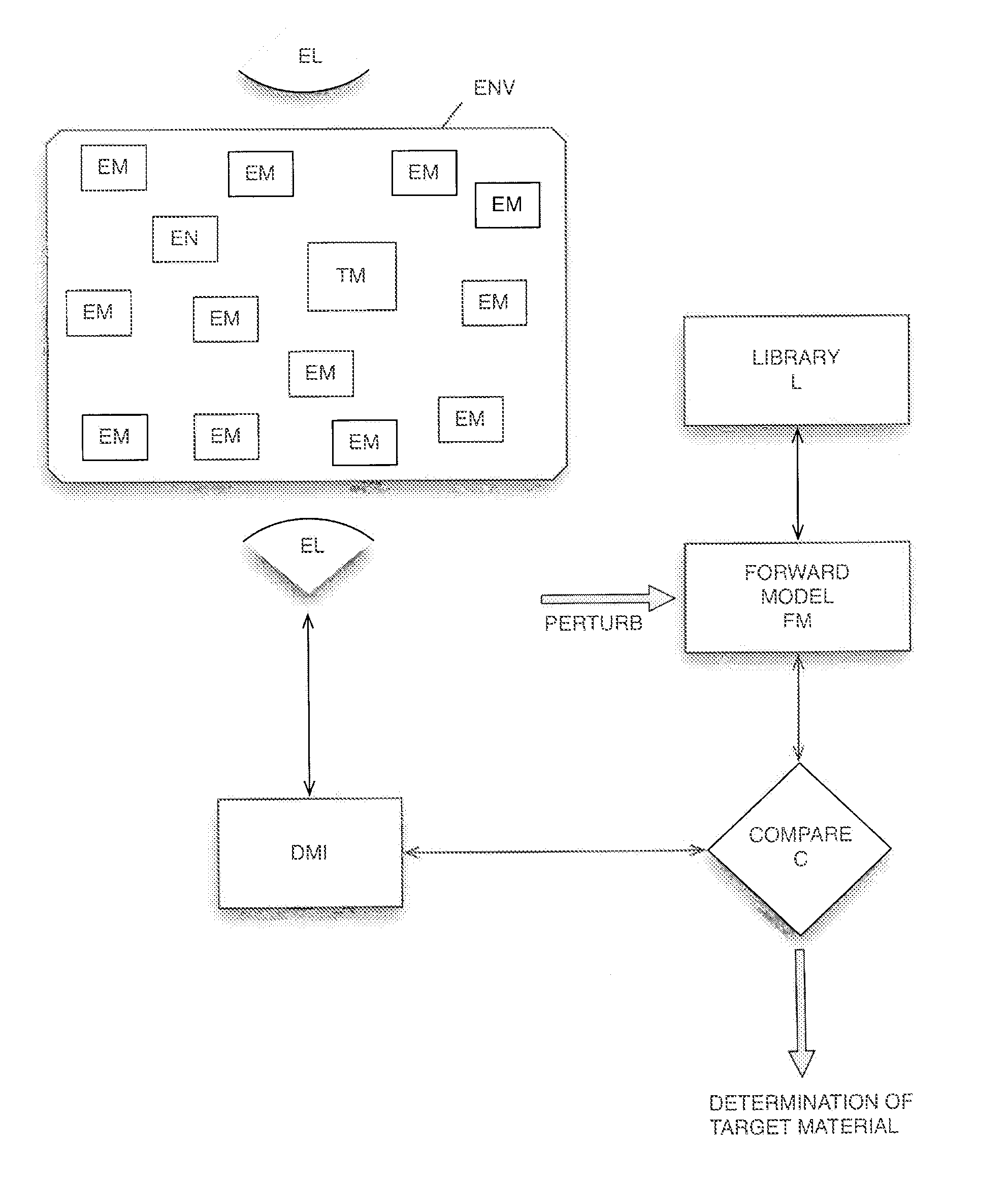Classifying and identifying materials based on permitivity features
a technology of permitivity and material, applied in the direction of cables, instruments, sensitivity measurements, etc., can solve the problems of insufficient detection capabilities, difficult detection and discrimination of non-conducting materials, and insufficient approach to detect concealed substances
- Summary
- Abstract
- Description
- Claims
- Application Information
AI Technical Summary
Problems solved by technology
Method used
Image
Examples
Embodiment Construction
Introduction
[0042]The invention will be better understood from the following descriptions of various embodiments of the invention. Embodiments are physical implementations of the invention (methods and apparatus). Apparatus embodiments are systems and structures made and operated in accordance with the principles of the invention. Method (process) embodiments are methods carried out in accordance with the principles of the invention. Each embodiment provides insight to the invention but may not itself describe the whole invention. In some cases, individual elements of one embodiment may be substituted for similar or corresponding elements of another embodiment carrying out a similar or corresponding function.
[0043]The invention relates to apparatus and methods that remotely (i.e., without physical contact) identify target materials based on their respective dielectric properties. Such materials include, but are not limited to explosives, explosive precursors, narcotic drugs, precurs...
PUM
| Property | Measurement | Unit |
|---|---|---|
| length | aaaaa | aaaaa |
| voltage | aaaaa | aaaaa |
| voltage | aaaaa | aaaaa |
Abstract
Description
Claims
Application Information
 Login to View More
Login to View More - R&D
- Intellectual Property
- Life Sciences
- Materials
- Tech Scout
- Unparalleled Data Quality
- Higher Quality Content
- 60% Fewer Hallucinations
Browse by: Latest US Patents, China's latest patents, Technical Efficacy Thesaurus, Application Domain, Technology Topic, Popular Technical Reports.
© 2025 PatSnap. All rights reserved.Legal|Privacy policy|Modern Slavery Act Transparency Statement|Sitemap|About US| Contact US: help@patsnap.com



